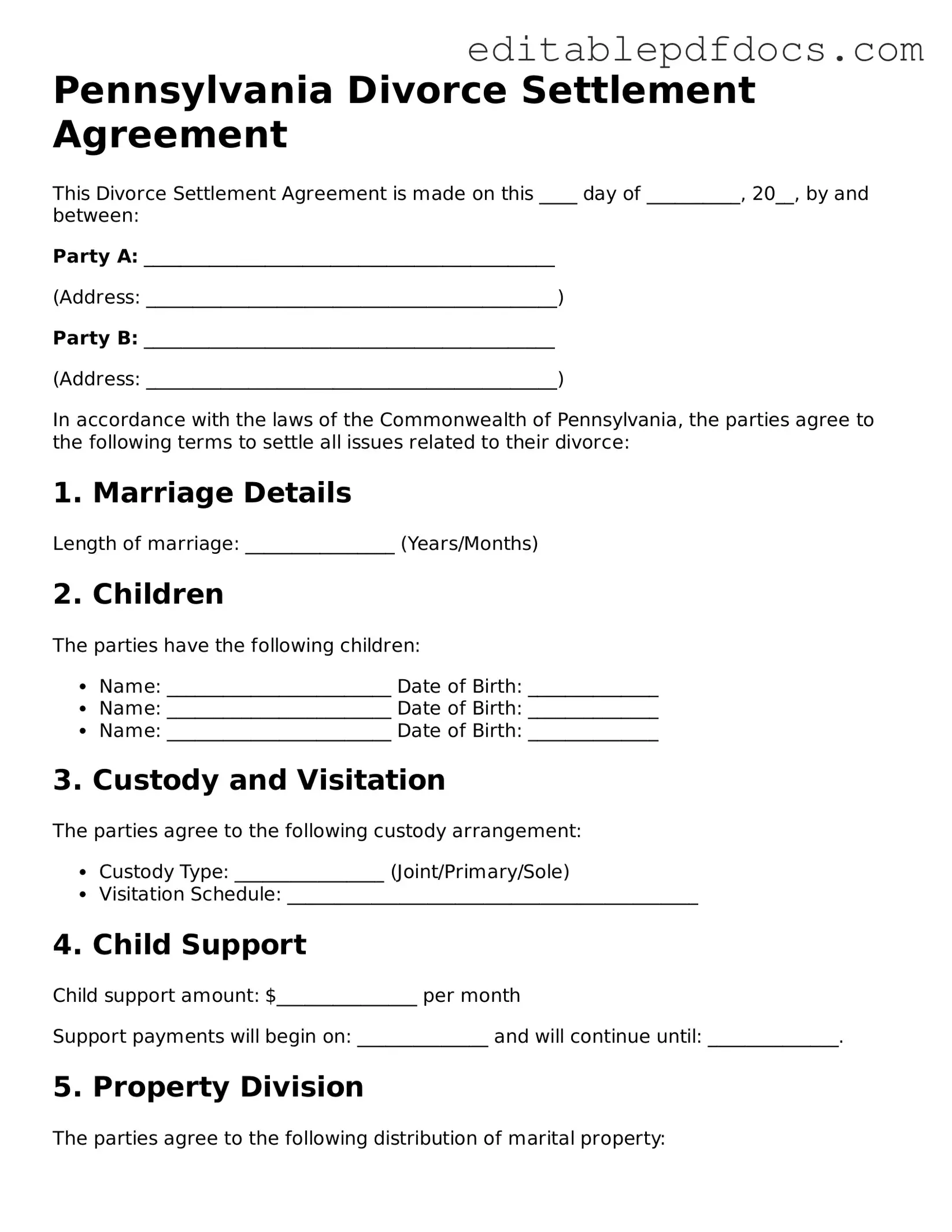Filling out the Pennsylvania Divorce Settlement Agreement form can be a daunting task, and many individuals inadvertently make mistakes that can complicate the process. One common error is failing to provide complete and accurate information. When sections are left blank or filled with incorrect details, it can lead to delays in the approval of the agreement. It is crucial to double-check all entries to ensure that names, dates, and other pertinent information are correct.
Another frequent mistake involves the miscalculation of financial obligations. Individuals often underestimate or overestimate their income, assets, or debts. This can result in an unfair distribution of marital property or unexpected financial responsibilities. It is essential to gather all financial documents and calculate figures carefully to avoid disputes later on.
Many people also overlook the importance of addressing all relevant issues in the agreement. For instance, neglecting to include provisions for child support or custody arrangements can lead to confusion and conflict after the divorce is finalized. Ensuring that every aspect of the separation is covered helps to prevent future misunderstandings.
Additionally, some individuals fail to consider the tax implications of their settlement. Certain assets may have tax consequences that can affect both parties after the divorce. Consulting with a financial advisor or tax professional can provide clarity on these matters, helping to avoid unexpected tax burdens.
Another mistake often made is not being clear about the terms of the agreement. Vague language can lead to different interpretations of what was intended. Clearly defining terms and conditions helps to ensure that both parties have a mutual understanding of their rights and responsibilities.
Finally, individuals sometimes forget to have the agreement reviewed by a legal professional. While it may seem like an unnecessary step, having an attorney examine the document can catch errors and suggest improvements. This extra layer of scrutiny can save time and prevent potential legal issues in the future.
